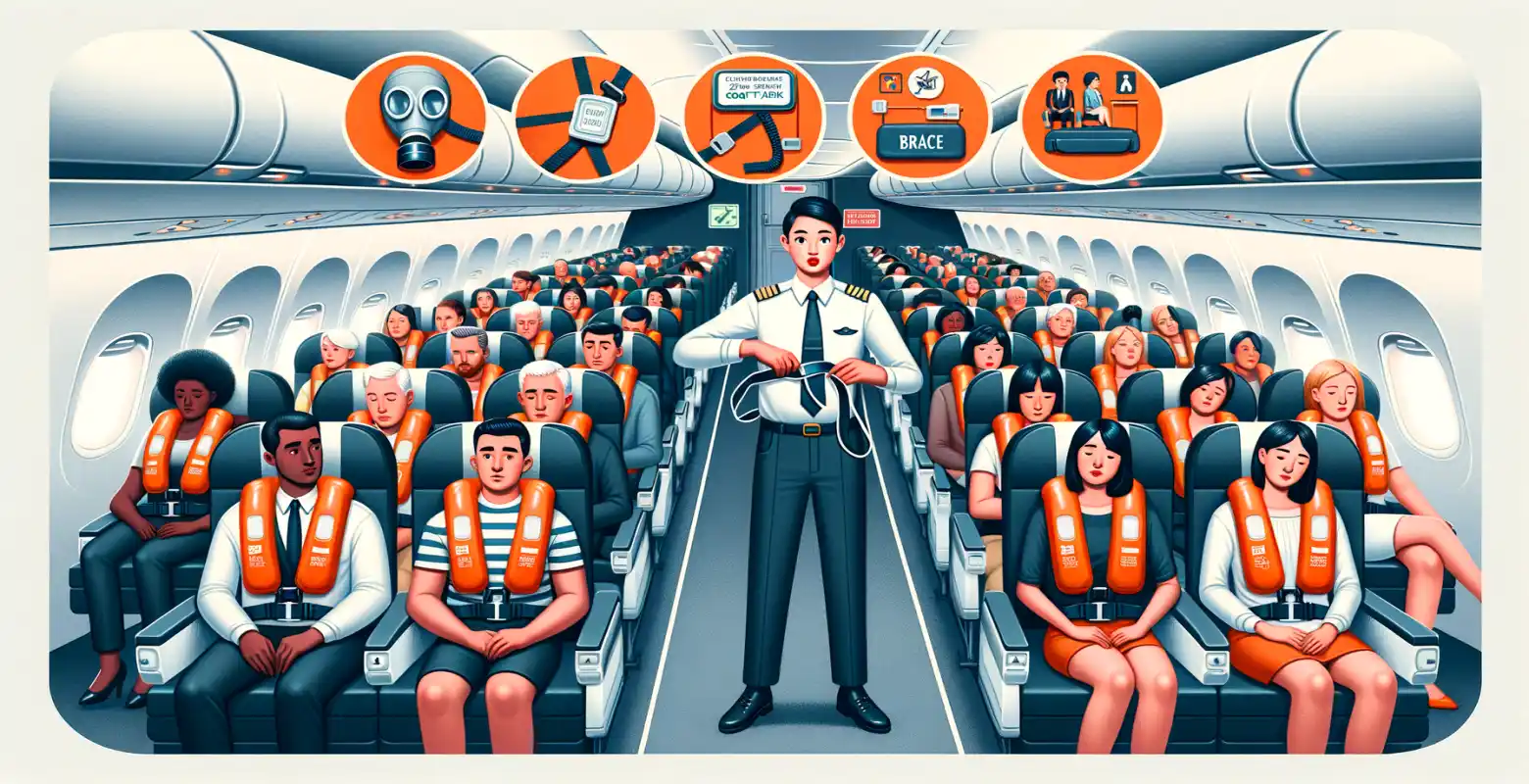The most important emergency procedures on board an aircraft
Introduction
Air travel has become one of the most popular means of transportation worldwide. Thanks to the development of aviation technology, millions of passengers use this mode of transport daily to cover long distances in a short time. Despite the high level of safety in civil aviation, the risk of emergency situations cannot be completely eliminated. Therefore, it is extremely important for both the crew and passengers to be aware of basic emergency procedures on board an aircraft. In this article, we will look at the most important emergency procedures that can save lives in crisis situations.
Basics of Emergency Procedures
Emergency procedures consist of instructions aimed at ensuring the safety of passengers and crew in unforeseen situations. In civil aviation, these procedures are strictly regulated by international standards, such as those defined by the International Civil Aviation Organization (ICAO), as well as national authorities, such as the Federal Aviation Administration (FAA) in the USA or the Civil Aviation Authority (ULC) in Poland.
Every commercial aircraft is equipped with a set of instructions regarding actions to be taken in emergency situations, which are regularly updated and tested. These procedures cover various scenarios, such as engine failures, cabin decompression, onboard fires, or emergency landings.
Cabin Decompression
Cabin decompression is one of the most dangerous scenarios that can occur on an aircraft. It can occur due to damage to the aircraft structure or a cabin pressure system failure. In the event of decompression, the cabin pressure drops rapidly, which can lead to oxygen deficiency.
In such a situation, oxygen masks are automatically released, which passengers should immediately put on. The crew is trained in rapidly descending to a level where oxygen is sufficiently available in the atmosphere. It is important for passengers to remain calm and follow the crew's instructions.
Fire Onboard
A fire onboard is another potentially catastrophic situation that requires immediate action. Smoke and fire detection systems are placed in key areas of the aircraft, such as kitchens and toilets. Upon detecting a fire, the crew immediately takes action using fire extinguishers available onboard.
If the fire requires evacuation, passengers must follow the crew's instructions regarding exiting the aircraft. Evacuation is carried out through emergency exits, which are clearly marked and regularly checked for functionality.
Emergency Landing
Emergency landing may be necessary for various reasons, such as engine failure, technical problems, or medical situations. The captain of the aircraft decides on the need for an emergency landing and informs the crew and passengers about further procedures.
During preparations for an emergency landing, passengers are asked to assume appropriate positions, such as bending forward with their heads tucked between their knees. The crew instructs passengers on how to safely exit the aircraft after landing, using emergency exits and rescue slides.
Modern Technologies and the Future of Emergency Procedures
With technological advancements, emergency procedures onboard aircraft are continuously being improved. Modern aircraft are equipped with advanced monitoring and diagnostic systems that can predict and prevent many technical problems.
Additionally, technologies such as automatic pilot systems are being developed, which can assist in safely landing the aircraft in cases where the crew is unable to do so. In the future, further development of technologies can be expected, further enhancing the safety of air travel.
Conclusion
Safety in civil aviation remains a priority for airlines and international aviation organizations. Familiarity with and adherence to emergency procedures are key elements in ensuring this safety. The aircraft crew is well-trained to handle various emergency situations, and passengers should be aware of basic protocols in such cases.
Traveling by air is one of the safest means of transportation, and the continuous improvement of emergency procedures and aviation technologies contributes to further increasing this safety. Therefore, it is crucial for every passenger to familiarize themselves with safety instructions before a flight and follow them as needed.






Number of comments: 0